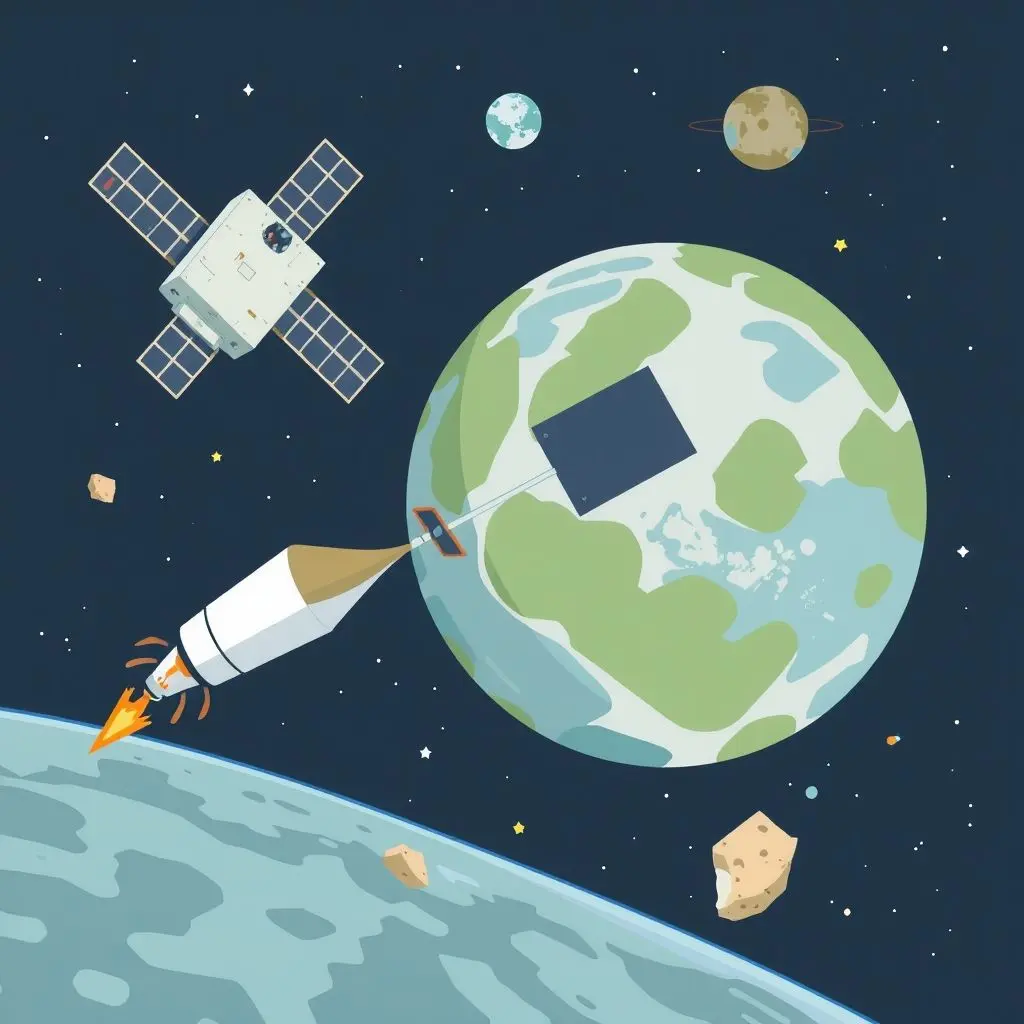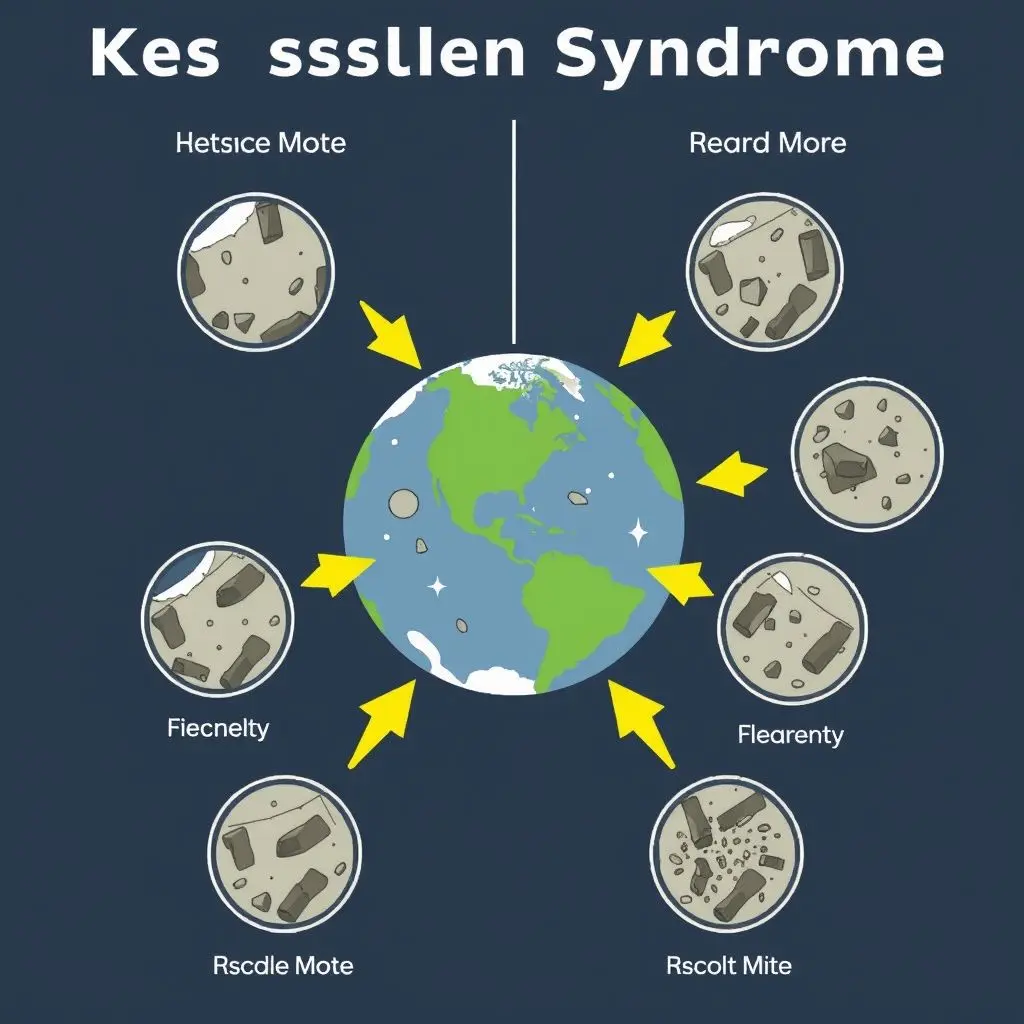Look up at the vast, dark expanse of the night sky. It’s a canvas of wonder, dotted with distant stars and galaxies, inviting us to dream of exploration and discovery. But there’s a less romantic reality lurking just above our atmosphere: a growing, chaotic cloud of junk. We’re talking about space debris.
From spent rocket stages and retired satellites to stray nuts, bolts, and even flecks of paint, humanity has been steadily cluttering Earth’s orbit. This isn’t just inconvenient; it’s a significant and escalating threat. These fragments, no matter how small, hurtle around our planet at astonishing speeds, turning innocuous items into dangerous projectiles capable of severely damaging or destroying vital, operational satellites.
This orbital clutter is jeopardizing everything from our global communication networks and critical weather forecasting systems to essential scientific research platforms and the future of space travel itself. It’s a problem composed of millions of pieces, creating a risk that could potentially cascade out of control. Tackling this celestial mess is shaping up to be one of humanity’s most pressing technical and logistical challenges in the coming years.
Before we dive deeper into the nitty-gritty of this issue, take a moment to visualize the scale of this problem. We put together a short video showing just how congested our orbital paths are becoming. If you thought your room was cluttered, prepare to be amazed:
Table of Contents
What Exactly is Space Debris?
Space debris, also known as orbital debris, is essentially any human-made object in orbit around the Earth that no longer serves a useful function. Think of it as the refuse of our space age activities. This isn’t just a few lost items; the inventory is vast and varied:
- Defunct Satellites: Satellites that have reached the end of their operational life, whether due to technical failure, running out of fuel, or being deliberately shut down.
- Spent Rocket Stages: The upper stages of launch vehicles that carried payloads into orbit and were then discarded.
- Fragmentation Debris: This is perhaps the most concerning category. It comes from explosions or collisions in space. A satellite battery exploding, leftover fuel igniting in a rocket stage, or two objects colliding can shatter into thousands, even millions, of smaller pieces.
- Mission-Related Debris: Objects intentionally discarded during missions, such as lens covers, protective shrouds, adapter rings, or even tools accidentally dropped by astronauts.
Over the decades of space exploration and satellite launches, we’ve left behind a trail of these objects. Each new launch, while adding valuable assets to orbit, also carries the potential to add more debris, whether through the discarded rocket or potential future fragmentation events.

The Alarming Scale and Speed of the Problem
Quantifying space debris is challenging because much of it is too small to track precisely. However, estimates from organizations like NASA and the European Space Agency (ESA) paint a concerning picture:
- There are millions of pieces of debris too small to track (typically smaller than 1 cm).
- Hundreds of thousands of pieces are larger than 1 cm but smaller than 10 cm.
- Tens of thousands of objects are 10 cm or larger (these are the ones regularly tracked).
- The total mass of all space objects in orbit is estimated to be over 10,000 tonnes.
What makes this volume of debris particularly hazardous is its speed. Objects in low Earth orbit (LEO), where many satellites operate, travel at speeds of up to 17,500 miles per hour (around 28,000 km/h). In higher geostationary orbits, speeds are also incredibly high.
At these hypervelocities, the kinetic energy of even a small object is immense. A fragment just 1 cm across has enough energy to cause catastrophic damage to a satellite, potentially shattering it into thousands more pieces of debris, creating a domino effect.
Understanding the Kessler Syndrome
This cascading effect of collisions is often referred to as the Kessler Syndrome, named after NASA scientist Donald Kessler. It describes a scenario where the density of objects in orbit becomes so high that collisions between objects cause a chain reaction, with each collision generating more debris and increasing the likelihood of further collisions. In a severe Kessler Syndrome scenario, certain orbital paths could become so saturated with debris that using them for satellites or spacecraft becomes practically impossible for generations.

Why Space Debris Matters to Life on Earth
The consequences of collisions in space aren’t confined to the vacuum of orbit. We rely heavily on satellites for countless aspects of modern life:
- Communications: Satellite phones, global internet access (especially in remote areas), and broadcasting signals.
- Navigation: GPS and other global navigation satellite systems (GNSS) that power everything from your car’s navigation to critical infrastructure like transportation and logistics.
- Weather Forecasting & Climate Monitoring: Satellites provide essential data for predicting weather, tracking storms, and monitoring climate change.
- Scientific Research: Space telescopes and other scientific instruments in orbit expand our understanding of the universe and our planet.
- Earth Observation: Satellites are used for everything from monitoring land use and agriculture to tracking deforestation and responding to disasters.
- Security & Defense: Many countries rely on satellites for surveillance, intelligence, and secure communications.
A collision with a piece of debris can render a multi-million or even multi-billion dollar satellite useless. Losing access to these services, even temporarily, could have significant economic, social, and even safety implications.
Furthermore, space debris poses a direct threat to crewed space missions, including the International Space Station (ISS). While the ISS has some shielding and can perform avoidance maneuvers, the increasing density of debris heightens the risk for astronauts and future space travelers.
Tracking the Orbital Junk
Organizations like the U.S. Space Command and various national space agencies operate sophisticated radar and optical telescope networks to track larger pieces of debris. Cataloging these objects allows operators to predict potential close approaches with active satellites and maneuver them out of harm’s way when necessary. However, tracking millions of smaller pieces is currently impossible, and it’s these untracked fragments that pose a significant and unpredictable risk.
![]()
Strategies for Mitigation and Removal
Addressing the space debris problem requires a two-pronged approach: mitigation (preventing the creation of new debris) and active removal (cleaning up existing debris).
Mitigation Efforts: Preventing More Mess
International guidelines, primarily from the Inter-Agency Space Debris Coordination Committee (IADC), recommend several mitigation practices:
- Post-Mission Disposal: Satellites in LEO should be designed to deorbit within 25 years after their mission ends. This can be achieved through onboard propulsion to lower their orbit into the atmosphere (where they burn up) or by using atmospheric drag.
- Passivation: Rocket bodies and satellites should vent any remaining fuel and discharge batteries at the end of their mission to prevent potential explosions.
- Avoiding Intentional Breakups: Countries are encouraged to avoid anti-satellite missile tests or other actions that deliberately create large amounts of debris.
While these guidelines exist, they are not always legally binding for all actors, and ensuring compliance across all space-faring nations and private companies is a significant challenge.
Active Debris Removal: Cleaning Up the Past
This is the more complex and technically challenging aspect. Removing large, uncontrolled objects from orbit is difficult and expensive. Numerous concepts are being explored and tested:
- Capture and Deorbit: Using robotic arms, nets, or harpoons to capture debris and then use a propulsion system to drag it into the atmosphere.
- Drag Enhancement: Deploying sails or other devices on debris to increase atmospheric drag and accelerate deorbiting.
- Laser Ablation: Using ground-based or space-based lasers to zap small amounts of material off a piece of debris, slightly altering its orbit and eventually causing it to re-enter.
- Magnetic Tethers: Using long, conductive tethers to create drag and influence the debris’s orbit via interaction with Earth’s magnetic field.
Each of these methods faces significant technical hurdles, including safely approaching and grappling non-cooperative, tumbling objects, the cost involved, and the potential risk of creating *more* debris during the cleanup attempt. Legal and regulatory frameworks for removing objects owned by another entity also need to be established.

International Cooperation and the Path Forward
Space debris is a global problem that transcends national borders. It requires international cooperation among governments, space agencies, and the burgeoning private space industry. Developing common standards for satellite design, enforcing mitigation guidelines, and collaborating on active removal technologies are crucial steps.
Organizations like the United Nations Committee on the Peaceful Uses of Outer Space (COPUOS) are forums for discussing these issues and developing international norms. Ultimately, ensuring the long-term sustainability of space activities will require a concerted effort from everyone involved.
Frequently Asked Questions About Space Debris
How much space debris is currently in orbit?
While large, trackable objects (larger than 10 cm) number in the tens of thousands, estimates suggest there are hundreds of thousands of pieces between 1-10 cm and millions of pieces smaller than 1 cm.
How fast does space debris travel?
In Low Earth Orbit (LEO), where much of the debris resides, objects can travel at speeds up to 17,500 mph (about 28,000 km/h). Even small pieces carry tremendous kinetic energy at these velocities.
Can space debris fall back to Earth?
Yes, smaller pieces burn up entirely when they re-enter the Earth’s atmosphere due to friction. Larger objects might not burn up completely, but most orbital paths cause re-entries over oceans or sparsely populated areas. The risk of being hit by a piece of space debris is statistically very low, though not zero.
Is space debris a new problem?
No, debris has been accumulating since the start of the space age in 1957. However, the increasing number of launches, particularly large constellations of satellites, is accelerating the growth of the problem, making it more critical than ever before.
Who is responsible for cleaning up space debris?
Currently, there is no single entity or clear international law mandating who must clean up existing debris, especially objects launched by another country or company decades ago. Mitigation guidelines place responsibility on operators for the *future* disposal of their own satellites. Developing legal and economic frameworks for active removal is part of the ongoing challenge.
Safeguarding Our Access to Space
The challenge of space debris is a stark reminder that our activities, even far above us, have lasting consequences. Just as we’ve learned to manage pollution on Earth, we must now learn to manage the orbital environment. The continued functionality of the satellites we rely on daily, the safety of astronauts, and the very possibility of future space exploration hinge on our ability to address this growing problem. Developing innovative technologies for tracking and removal, alongside establishing robust international cooperation and regulations, are essential steps towards ensuring that the incredible resource that is Earth orbit remains accessible and safe for generations to come.





